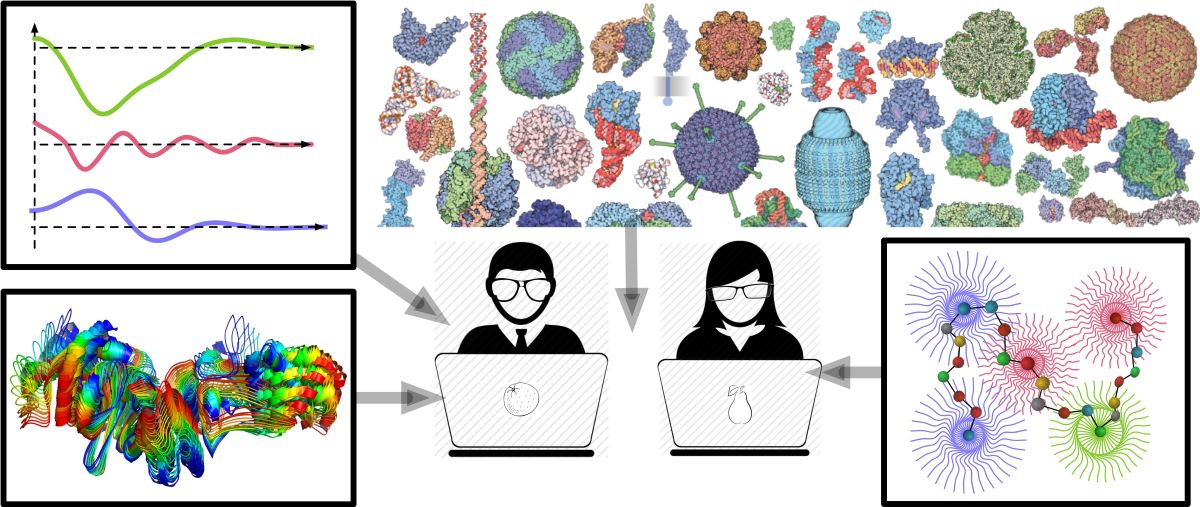Speaker
Description
Unraveling the mysteries of Intrinsically Disordered Proteins (IDPs) and Regions (IDRs) is one of the greatest challenges in the 21st century. The flexibility of these regions allow proteins to adopt vastly different conformations, allowing them to facilitate the binding and unbinding of vital activation sites. These regions, even in well-studied proteins such as the tumor suppressor p53 protein, are not well understood. We utilized data from a CryoEM structure of p53, and terminally locked the regions to reflect the existence of neighboring globular regions on the behavior. We ran trajectories with the end-to-end distances locked at 0.5, 3.0, 5.0 and 7.0 nm to reflect to observe the changes in the types and quantities of secondary structures. We computed the average chemical shifts (CS) for each of these trajectories and found that experimental CS agreement peaks at the distance specified in the CryoEM structure, with root-mean-squared deviation improved by between 0.12 and 0.26 ppm (depending on the atom) from the traditional MD trajectory (unrestricted). The results of this investigation are to be published in JCTC entitled “Exploring the Role of Globular Domain Locations on an Intrinsically Disordered Region of p53: A Molecular Dynamics Investigation” along with several other articles in the works about other regions within p53. The goal for this investigation is to give a complete understanding of the multiple conformations of p53, provide insight into the performance of flexible IDRs in primarily globular proteins, and pave the way for a collaborative SAXS investigation into the inner machinations of these elusive structures.
| Submitting to: | Integrative Computational Biology workshop |
|---|

